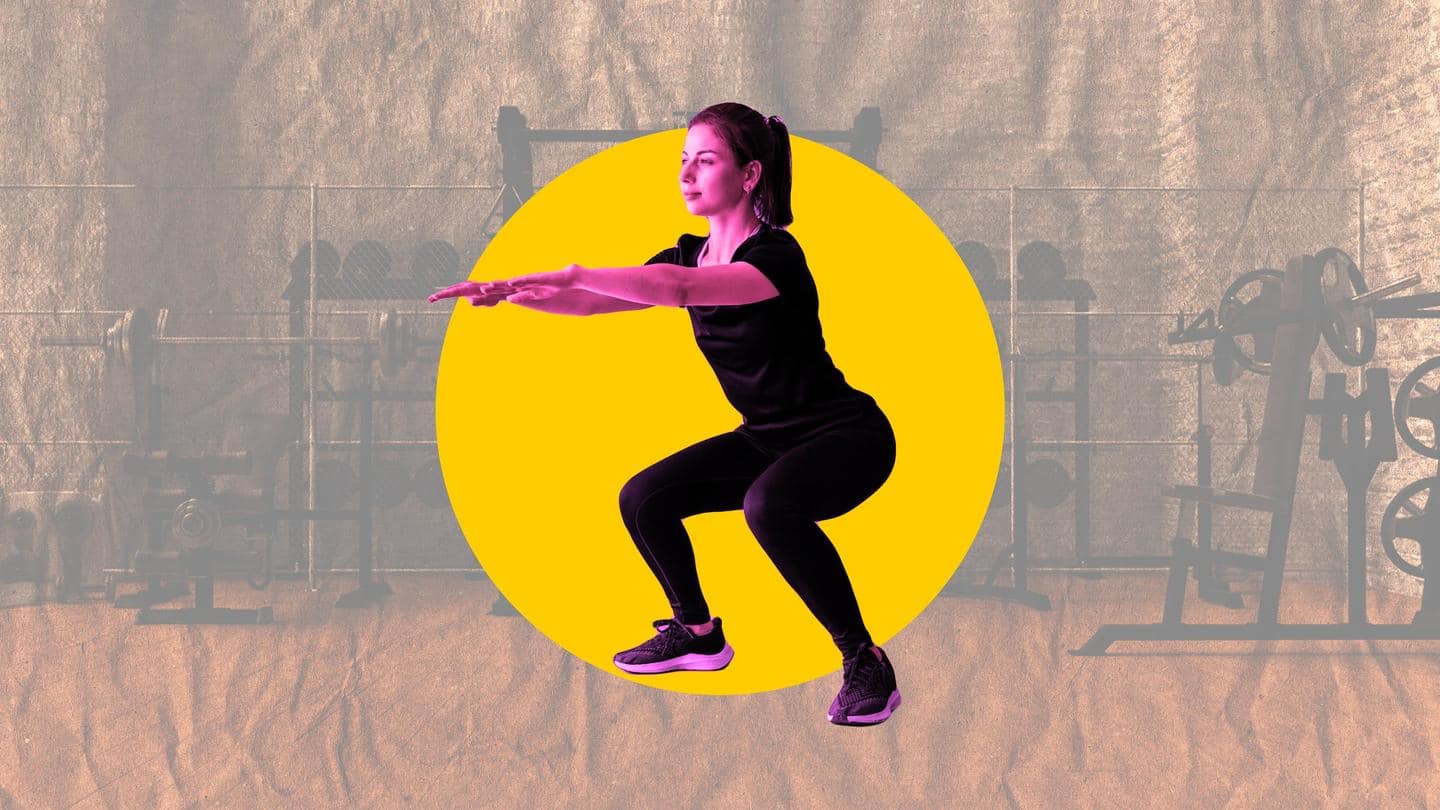
Try these 5 fall prevention exercises and improve balance
What's the story
With age, people start losing balance and experience blurred vision or cognitive impairment.
This can cause stumbling or falling and lead to a serious life-altering situation or a critical injury.
Performing a fall prevention exercise regularly can strengthen your joints and key muscles and improve balance.
Practice these five exercises to prevent falls and stay injury-free.
Quote
Falls are an expensive burden for the healthcare system: Trainer
Certified personal trainer Shane McLean of Breakingmuscle.com said, "For older folks, one in five falls results in a serious injury. Falls are also an expensive burden for the healthcare system, with the total medical costs for falls in 2015 topping $50 billion."
Strengthens leg muscles
Squats
People usually perform squatting movements throughout the day without even realizing it.
Squats can help to strengthen your leg muscles including your hamstrings, glutes, and quadriceps, which prevents falls to some extent.
Squats also alleviate back pain and strengthen the core which makes standing, turning, and bending much smoother and easier.
It also improves your posture and increases flexibility and speed.
Powerful exercise
Farmer's carries
Farmer's carries is a powerful exercise that involves walking while carrying some kind of weight in hand.
It increases muscle strength and power while improving your posture. It also enhances your breathing patterns and shoulder stability.
This exercise burns fat, improves your grip, and increases your heart rate.
Instead of dumbles and kettlebells, you can also carry filled water bottles while attempting this exercise.
Strengthens glutes
Single leg balance
The single leg balance exercise is highly effective in reducing body and muscle imbalances and strengthening your glutes.
You can practice this exercise for one minute, three times a day.
Stand between two chairs of the same height and bend your knee to raise one foot. Hold on to the support surface and balance on one leg.
Balance for 10-15 seconds on each leg.
Builds flexibility
Calf stretch
Calf stretches help build flexibility and make everyday movements like walking and standing easier.
They also relieve muscle soreness and promote ankle mobility and stability.
Place your hands against a wall, and bend your right leg while stepping on the left leg back.
Keep the left leg straight with your heel on the floor. Hold for 20 seconds and repeat on the opposite leg.
Reduces neck compression
Head nods
Head nod exercises help reduce pressure on the cervical nerves, improve posture and reduce neck compression.
Lie on your back, lift your head and try to bring your chin to your chest. Look right and left while keeping your head off the ground.
Touch your left ear to the left shoulder and right ear to the right shoulder. Do this three-four times weekly.